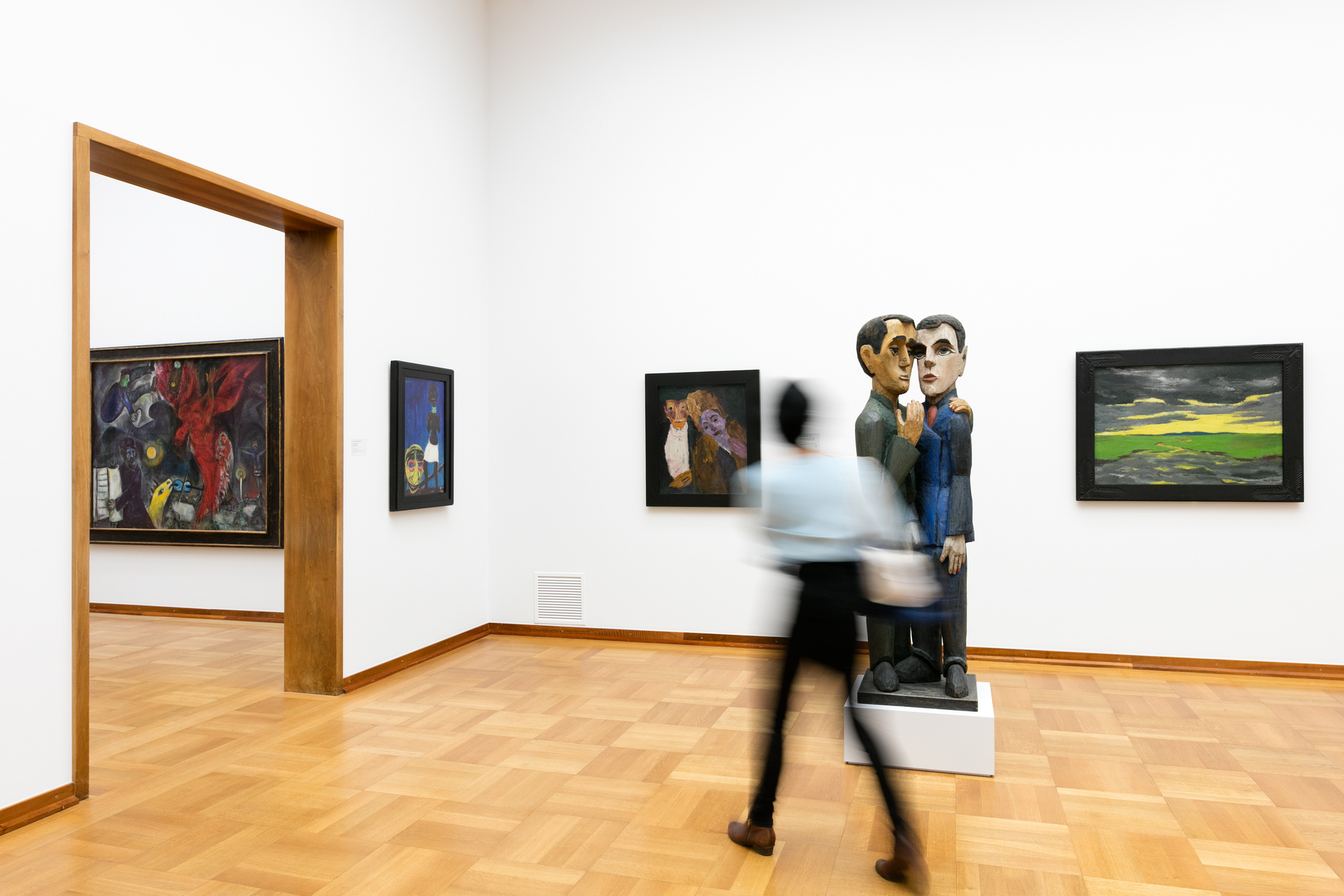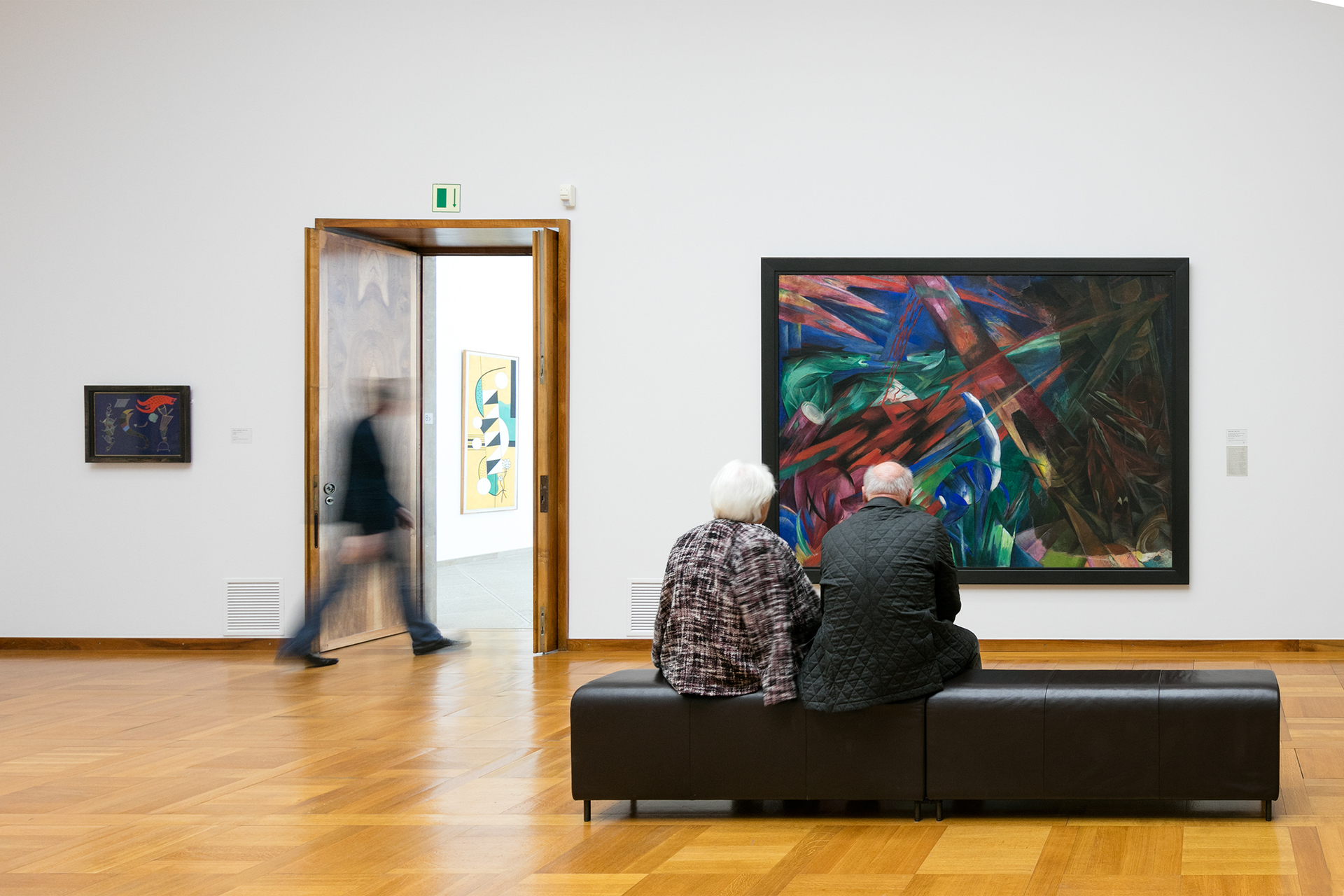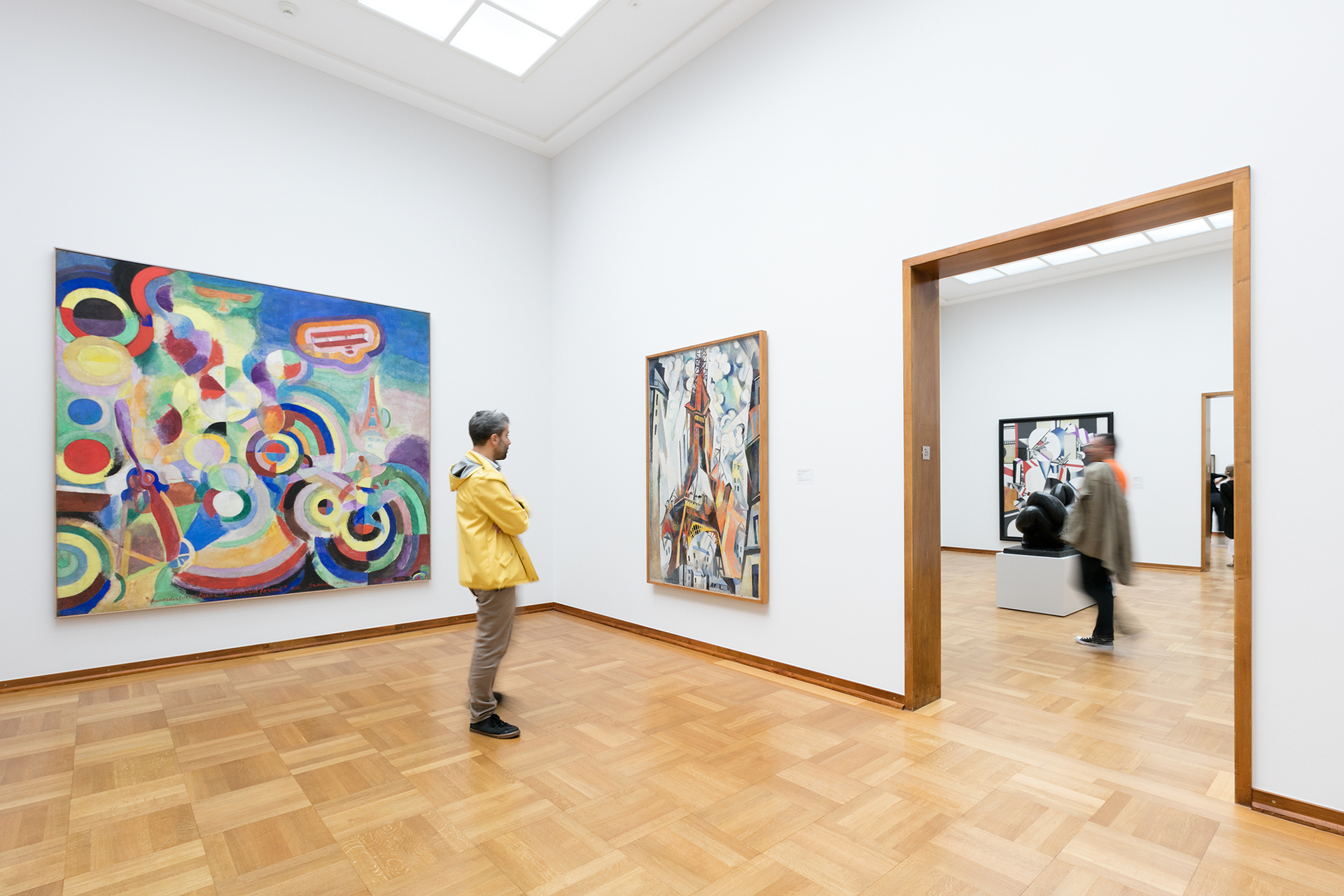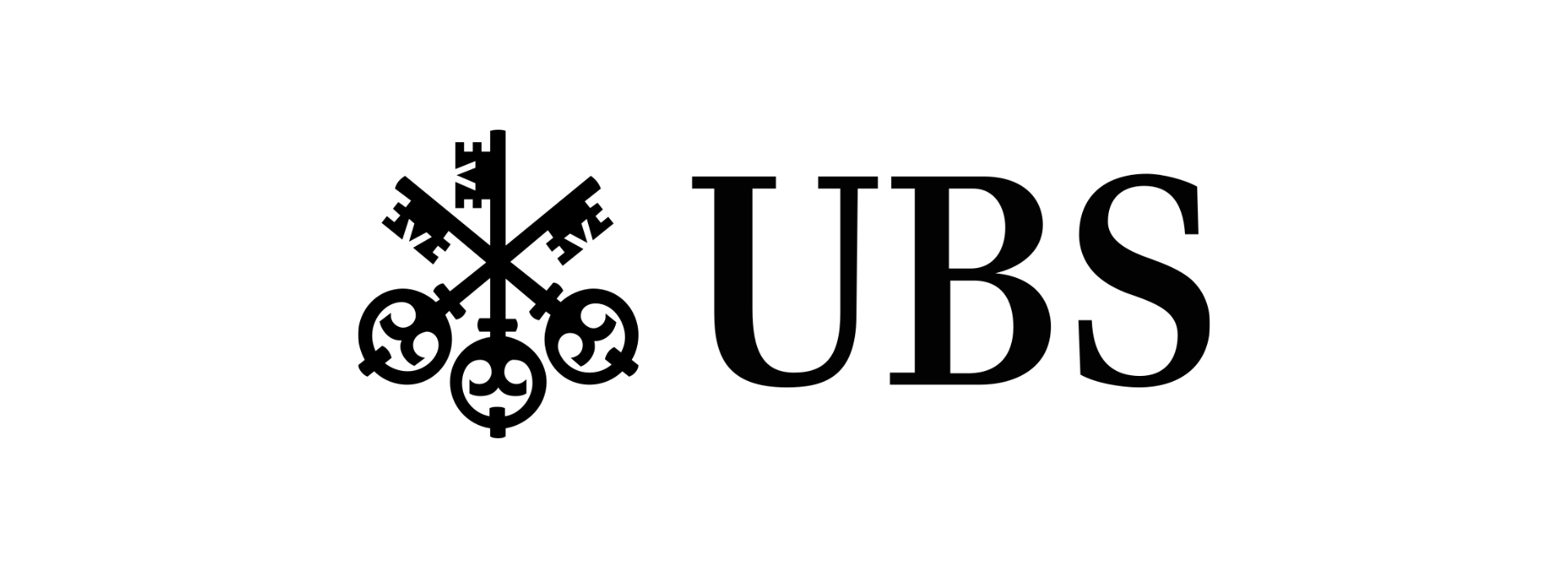The Moments of the Collection
Art of the Twentieth Century
HAUPTBAU, 2. OG / Curator: Eva Reifert
The Kunstmuseum Basel has redesigned the display of twentieth-century art on the second floor of its Hauptbau and presents its masterworks of classic modernism in a new constellation. The reinstallation also presented an opportunity to switch the direction of the recommended tour of the galleries, which now matches that of the Old Masters collection and the display of nineteenth-century art on the first floor, making for a more consistent visitor experience. Visitors ascending the stairs to the second floor will be guided toward the galleries on the left.
The new presentation seeks to activate the collection and provide more information to visitors in order to offer them a richer experience of the collection’s history and outstanding quality.
A number of brief notes focus on major Moments of the Collection, key events in its history that brought significant enlargements of the museum’s holdings: the year 1939, the Picasso donations, the donations by Raoul La Roche and Marguerite Arp-Hagenbach, and the additions of the Im Obersteg Collection and the treasures of the Emanuel Hoffmann and Alberto Giacometti Foundations.
The Year 1939
1939 was a turning point not only in world history, but also in the history of the Öffentliche Kunstsammlung Basel, the municipal art collection of Basel, as the new presentation highlights. Extraordinary historical circumstances led to the arrival in Basel of twenty-one works formerly owned by museums in Germany. Starting in 1937, the National Socialists had condemned thousands of works of art in German museums as “degenerate” and confiscated them. Roughly one in three works was selected for sale abroad. Georg Schmidt, the Kunstmuseum Basel’s director at the time, obtained a special loan from the Government of Basel to purchase works at an auction in Lucerne and from a storage depot in Berlin. Focusing on German modernism, he turned an area in which the museum had had very little into a mainstay of its collection. His stated objective in acquiring the vilified and endangered works was to “provide a new home to this art.” Works that entered the collection at the time include Oskar Kokoschka’s Bride of the Wind (1913), Paula Modersohn-Becker’s Self-Portrait as Semi-Nude with Amber Necklace II (1906), Franz Marc’s Fate of the Animals (1913), and Max Beckmann’s The Nizza in Frankfurt am Main (1921).

Emanuel Hoffmann Foundation
The single largest and art-historically most significant ensemble of works on permanent loan to the Kunstmuseum Basel is the extensive collection of the Emanuel Hoffman Foundation. Set up in 1933 to manage the collection of modernist art assembled by Maja and Emanuel Hoffmann-Stehlin, the foundation continues to add contemporary art to its holdings, which, thanks to a close partnership with the Öffentliche Kunstsammlung Basel established in 1941, ideally complement the museum’s own possessions. Works such as Giorgio de Chirico’s groundbreaking metaphysical painting L’énigme de la fatalité (1914), which anticipated the emergence of Surrealism and Salvador Dalí’s iconic Girafe en feu (ca. 1936/1937) are among this collection’s most prominent masterworks.
Picasso Donation
In 1967, when the owner of two outstanding paintings by Picasso that had been on permanent loan to the Kunstmuseum Basel, Les deux frères (1906) and Arlequin assis (1923), was forced to sell these treasures, the citizenry of Basel adopted a resolution to acquire the two works for the public provided that private donors would contribute 2.4 million francs. A very active citizens’ initiative organized the so-called “beggars’ festival” to raise the balance. When Picasso heard of the events in Basel, he donated four more works to the city: Homme, femme et enfant (1906), a sketch for the Demoiselles d’Avignon (1907), and the two great late works Vénus et l’amour and Le couple (1967). Franz Meyer, then the director of the Kunstmuseum Basel, was personally invited to the artist’s studio to select these gifts. The Picasso euphoria also inspired Maja Sacher-Stehlin to complement the 1967 donations by contributing the major Cubist work Le poète (1912).

Alberto Giacometti Foundation
Around 1955, the American industrialist David G. Thompson compiled what was arguably the most important private collection of works by Alberto Giacometti. When the altogether sixty-one sculptures, seven paintings, and twenty-one drawings were offered for sale at Galerie Beyeler, Basel, in 1960, the Kunsthaus Zürich, with support from several private citizens, established a foundation that acquired Thompson’s holdings as the basis for a growing collection. The artist himself and, later, his brother Bruno donated numerous additional works. Thanks to the dedicated efforts of the Basel-based entrepreneur Hans Grether, twenty-two works from the foundation’s possessions are on permanent loan to the Kunstmuseum Basel, including Boule suspendue (1930), which thrilled and inspired the Surrealists, and the monolithic Cube (1934), which, in Giacometti’s eye, marked the end of Surrealism.

Raoul La Roche Donation
The banker Raoul La Roche (1889–1965), a native son of Basel, spent much of his life in Paris. In 1918, he became acquainted with Charles-Édouard Jeanneret, who then introduced him to his friend and fellow artist, the Purist painter Amédée Ozenfant. With their invaluable help, La Roche assembled a first-rate collection of Cubist art encompassing works by Picasso, Gris, Braque, Léger, and others. In three stages, in 1952, 1956, and 1963, La Roche donated altogether ninety works from his collection to the Kunstmuseum Basel, establishing the museum’s renown as a must-see destination for lovers of Cubism.

Arp-Hagenbach Donation
Marguerite Arp-Hagenbach (1902–1994) started collecting art systematically after seeing the exhibition of Constructivist work at the Basler Kunsthalle in 1937, which made a deep impression on her. Her first purchases were a painting by Sophie Taeuber-Arp and a Constructivist composition by László Moholy-Nagy, LIV (1936). By the 1960s, she had amassed almost a thousand works, and in 1968, she donated the core of her collection—290 paintings, sculptures, and works on paper—to the Kunstmuseum Basel.
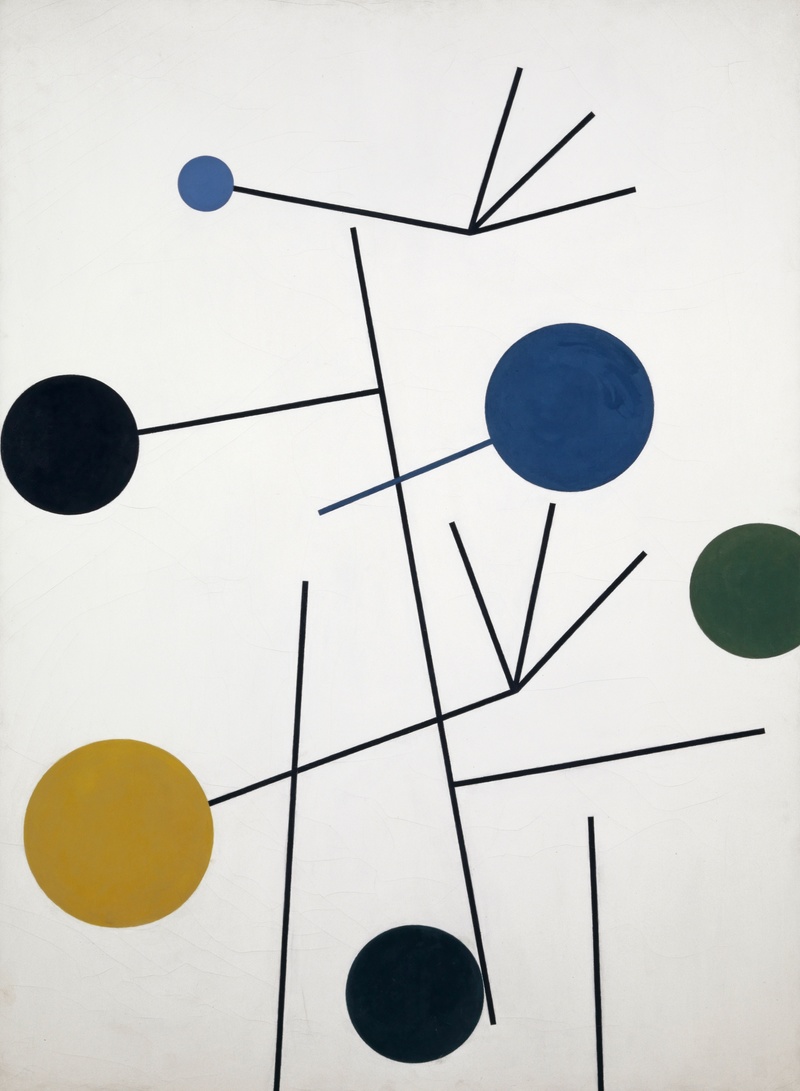
Im Obersteg Foundation
Encompassing ca. 220 works, the private collection of Karl Im Obersteg (1883–1969), who owned a trucking company in Basel, was transferred to a foundation in 1992; it has been on permanent loan to the Kunstmuseum Basel since 2004. Friendships with artists such as Alexej von Jawlensky and the collector’s preference for figurative and expressive painting informed his purchase decisions. The emotional power of color and a sometimes inquisitive, sometimes melancholy perspective on human existence are leitmotifs in the collection. Exemplary works include Picasso’s Buveuse d’absinthe (1901)—an early masterpiece from the artist’s Blue Period, painted when he was just twenty—and the three famous portraits of Jews Marc Chagall created in 1914.


